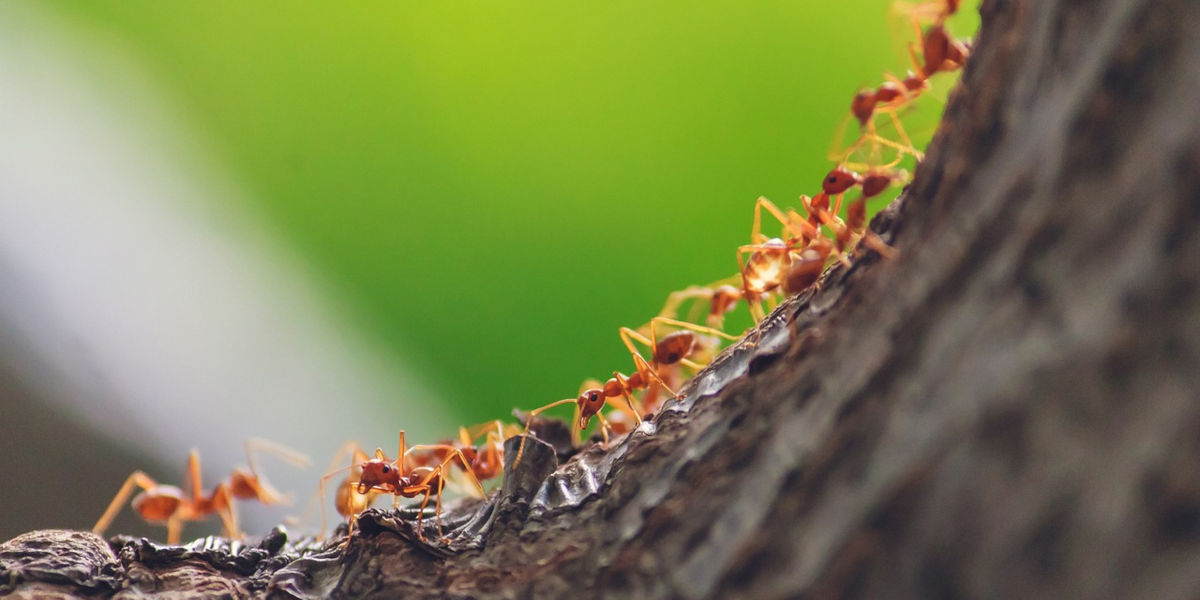When it comes to exemplifying complex societies, one need not look further than the bustling life within an anthill. While the notion of understanding insect societies may seem daunting, there's a particular science to it that is both fascinating and enlightening. In this exploration of the lives of ants, we shall delve into the question of 'how do ants communicate', aiming to shed light on the intricate science of ant communication.
The Pheromone Language: Unraveling How Ants Communicate
Ants, unlike us humans, do not rely on verbal or visual communication. Their language is one of chemicals called pheromones. These pheromones are secreted by each ant and can carry a multitude of information, which is then picked up by other ants via their exceptional sense of smell and touch. Ants can infer direction, intensity of threat, location of food, and health status of their peers to name a few - all through the interpretation of these pheromones. It is in this universal chemical language that ants ply their communication, swiftly passing messages within a colony that can range from a few dozen individuals to a colossal assembly of millions.
A Dance of Antennae: The Physicality of Ant Communication
While pheromones make up the majority of ant communication, it by no means is the only method that these insects use to dialogue. Ants frequently engage in another form of language - one of touch and movement. Using their antennae, ants tap, stroke, and poke, communicating myriad messages among each other. This form of communication often complements the chemical language, providing a means to further enrich the information exchange in the ant world. For example, upon locating a suitable food source, an excited worker might rush back to the colony leaving a trail of pheromones. On reaching there, she might engage in a sequence of vigorous body jerks and antenniferous contacts, which is a signal for other ant workers to follow the established trail to the food.
The science behind ant communication offers insight not only into one of the most incredibly structured societies on earth, but also provides learning for humans in understanding intricacies of language, communication and collective decision making. Despite the vast differences between our species, the parallels drawn from studying ant communications can lead to surprising revelations and inspirations about our own human societies.
The Communication System
In order to understand the complexity of an ant society, we first need to understand the communication methods these small insects employ. The primary mode of communication in ants is chemical. They use pheromones to leave trails for others to follow, mark territories and even to signal alarms. Their sophisticated use of pheromones is not dissimilar to our own use of written language, giving them an efficient method to exchange information in a fast-paced environment.
While pheromones are definitely the major component of ant communication, body language also plays a significant role. The act of antennation, where two ants touch their antennae, allows them to exchange information. Ants also use their mandibles and legs to express specific messages. For instance, aggression or territorial defense is often signaled by rapid movements of the front legs and mandibles.
The Role of Workers
The worker ants, as the name suggests, are the backbone of the ant society. They are responsible for bringing food, taking care of the queen and the young, and maintenance of the nest. Each worker has a specific role to play and this social division of labour contributes to the efficiency of the colony.
The Hierarchical System
Ant societies are known for their hierarchical system. At the top sits the queen, whose primary role is to lay eggs. Then, we have the worker ants, further divided into different tiers based on their age and role. The young workers are usually responsible for taking care of the young and the queen, while the older workers are responsible for foraging and sometimes, defense.
Interestingly, ants don't just rely on hierarchy. They also employ a unique method of 'voting' when it comes to important colony decisions like relocating the nest. Each ant explores potential sites and upon returning, communicates its find. If enough ants choose the same site, it's considered 'selected'. This collective decision-making further strengthens an already formidable societal structure.
Conclusion
The level of complexity and sophistication in ant societies is a fascinating example of evolution at work. The roles are well-defined, and the communication system is remarkably efficient. They illustrate the power of cooperation and communication within a society, whether it's forging a path through the wilderness or deciding on a new home. They truly show us that no task is too daunting when a community works together in harmony and understanding.




